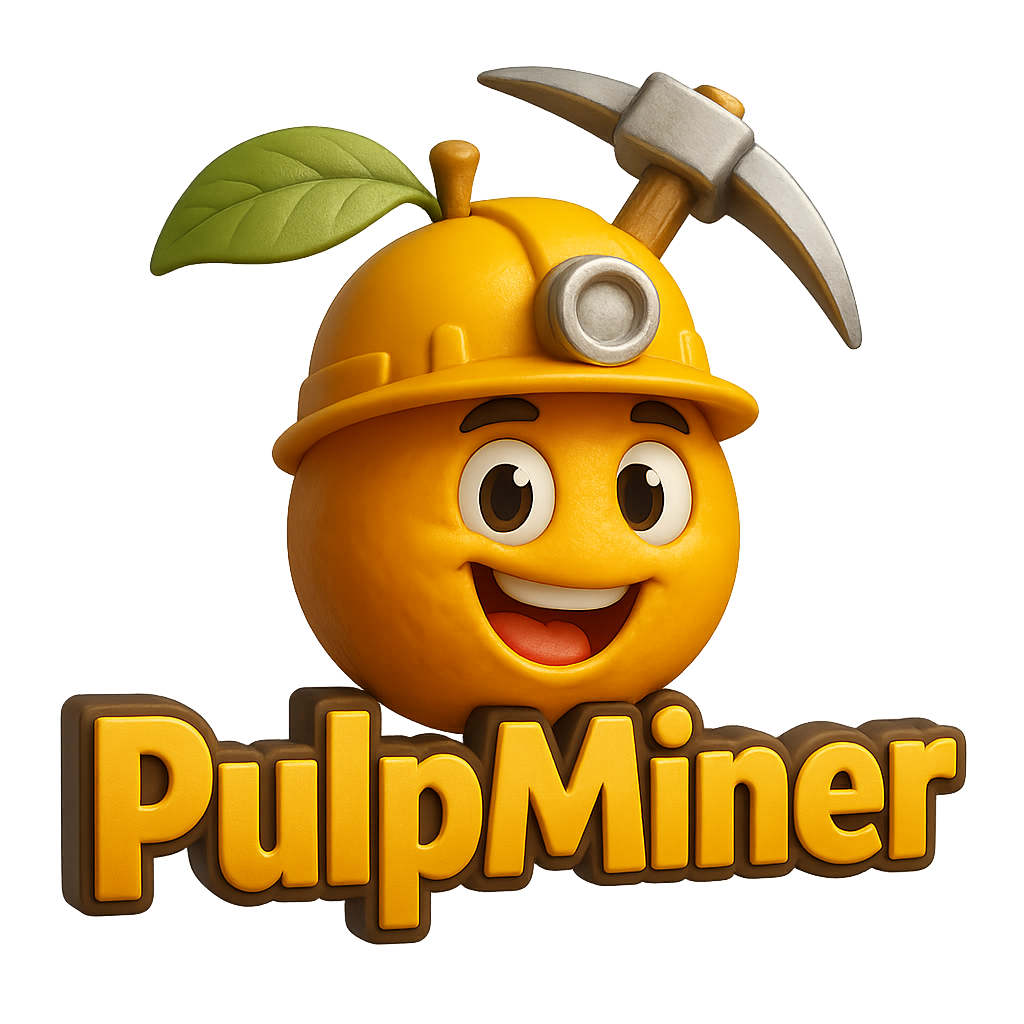Quickstart Guide
This guide will walk you through creating your first JSON API endpoint with Pulpminer. In just a few minutes, you’ll be able to transform any webpage into a structured JSON API.Prerequisites
Before you begin, make sure you have:- A Pulpminer account (sign up at pulpminer.com)
- The URL of a webpage you want to convert to an API
- Some credits in your account (new accounts start with free credits)
Step 1: Access the Dashboard
- Sign in to your Pulpminer account
- Navigate to the API Generation page
- You’ll see the main interface with a URL input field
Step 2: Generate JSON from a Webpage
- Enter your target webpage URL in the input field
- Select a scraper (scraper 1, scraper 2, etc.) from the dropdown menu
- Each scraper is optimized for different types of webpages
- Try different scrapers to find the one that works best for your page
- Select an LLM (AI Model) for JSON generation
- Choose from available models (e.g., Gemini 2, GPT-4)
- The LLM determines how the JSON is generated from the webpage
- Enter a valid CSS selector
- Specify a CSS selector to target a specific section of the webpage (e.g., ‘body’, ‘.main-content’, ‘#products’)
- This helps extract only the relevant part of the page
- Provide a Data Extraction Rule for AI
- Optionally describe what you want the AI to extract (e.g., “Fetch all 20 products”, “Extract all blog post titles”)
- This guides the LLM for more accurate results
- Click “Generate JSON from webpage content”
- Wait a few seconds while our AI analyzes the page
- Review the generated JSON structure in the editor
The AI will automatically identify and extract key information from the webpage using your selected scraper. You can customize this structure in the next step.
Step 3: Customize the JSON Structure (Optional)
- Use the interactive JSON editor to modify the structure
- Add or remove fields as needed
- Rearrange data to match your requirements
- Preview the changes in real-time
Step 4: Configure API Settings
-
Under “Saving Options”, decide if you want to enable caching:
- Enabled: Faster responses, data updated every 15 minutes
- Disabled: Real-time data, fresh content on every request
-
Configure session state (only available with Scraper 1):
- Use Session: Establishes a session with the origin URL before connecting to the target URL. Useful for .gov websites and domains that require session authentication
- No Session: Uses a fresh connection for each request
-
Optionally enable dynamic variables:
- Toggle the “Enable Dynamic Variables” switch
- Define variable names for URL path segments and query parameters
- Preview how your dynamic URL will look with the variables
- Click “Save as API” to create your endpoint
Step 5: Get Your API Key
- Go to the API Keys section
- Copy your unique API key
- Keep this key secure - you’ll need it for all API requests
Step 6: Use Your New API
For Static APIs (without dynamic variables):
Your API endpoint will be in this format:For Dynamic APIs (with variables):
Your API endpoint will be in this format:Understanding Credit Usage
Each action uses credits:- Generating JSON: 0.25 credits (base), 0.35 credits (with JS rendering)
- API endpoint request: 0.4 credits (base), 0.5 credits (with JS rendering)
Next Steps
Now that you’ve created your first API endpoint, you can:- Create more endpoints for different webpages
- Set up dynamic variables for flexible API usage
- Explore advanced JSON customization options
- Learn about caching strategies
- Understand API key management
- Check out our API reference for detailed endpoint documentation
Need Help?
If you run into any issues:- Check our detailed feature guides in the documentation
- Contact support at [email protected]
- Visit our GitHub repository for examples and updates
